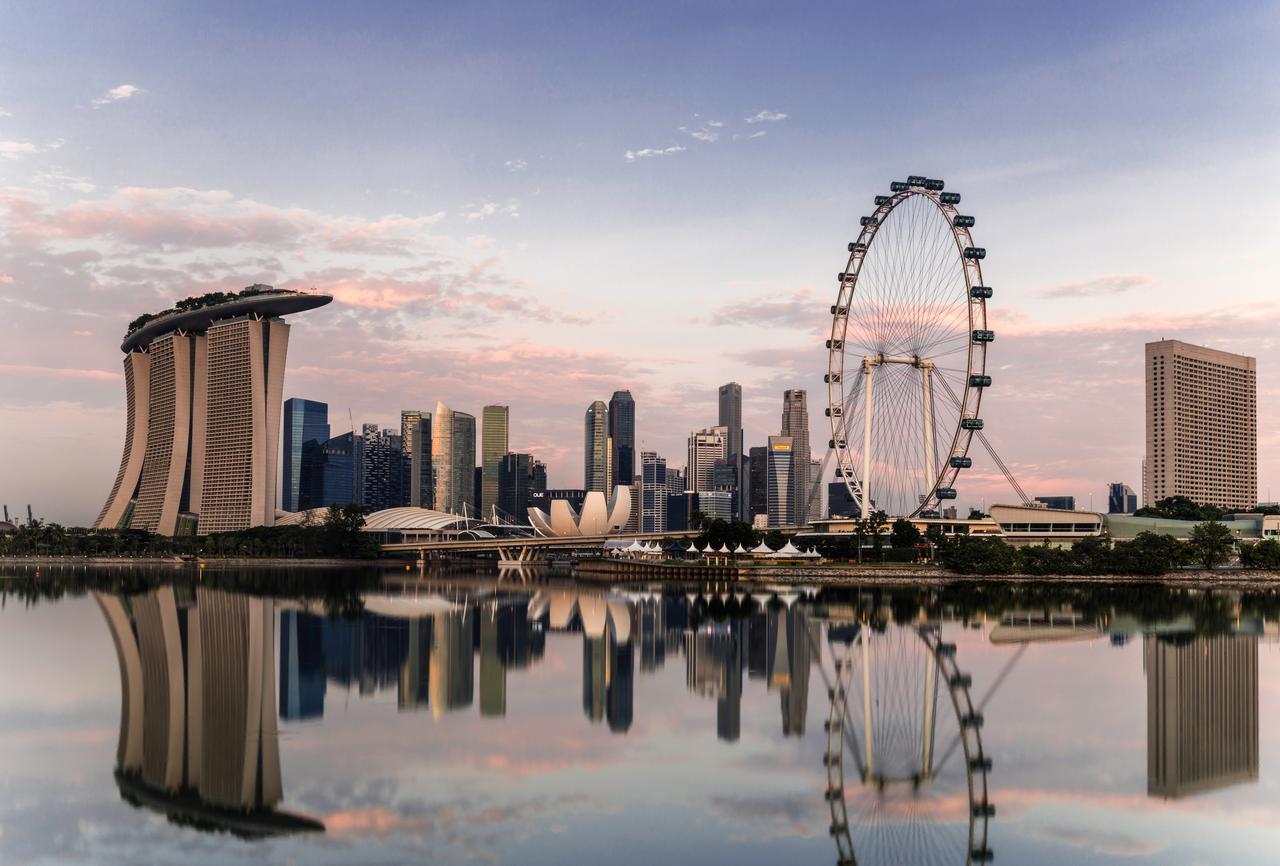
16.08.2023 | 350 tonnes of hydrogen per year from Rhine water
Hydrogen from the Rhine – a key pillar of Switzerland’s energy future
From winter 2023, Axpo and Rhiienergie AG will produce up to 350 tonnes of hydrogen per year from Rhine water in Domat/Ems. The green hydrogen will be used in heavy-duty transport in particular, replacing around 1.5 million litres of diesel fossil fuel. With the hydrogen production plant in the canton of Graubünden, Axpo is investing in another key pillar of Switzerland’s future energy supply.
Driving down the A13 towards San Bernardino, the Chapel of St. Anthony, sitting prominently on a hill, is a sight to behold on the left-hand side of the road. Turn your gaze to the right a little later and you’ll discover the operating building and weir of the Reichenau power plant a stone’s throw from the motorway. And just a few meters away from that, it’s all go. A small but powerful hydrogen production plant is being built here.
Rudolf Büchi, head of Axpo’s Vorderrhein power plant group, gazes down on the construction site from the weir. The foundations have been laid and two containers are in position. Wait, containers? ‘Whether compressor, voltage converter or electrolyser station, all modules of the hydrogen production plant have standard dimensions similar to those we know from shipping containers.’ This benefits us in transport, planning and, not least, in the arrangement of the modules. ‘We can stack two containers on top of each other to produce hydrogen in the smallest possible space,’ explains Rudolf Büchi. As a result, the entire plant only requires the same amount of land as would be needed to build a single-family home.
Creation of green hydrogen from Rhine water
In future, water from the Rhine will be split into hydrogen (H2) and oxygen (O2) in an electrolyser. This is known as power-to-gas technology. Because Axpo uses its own electricity from the renewable source of water for the electrolysis, no CO2 is released during hydrogen production, making it eligible for the best green hydrogen label.
In contrast to this, grey hydrogen is produced via gas and is not climate-neutral. Blue hydrogen also involves gas, but the carbon dioxide produced is retained using carbon capture and storage technology and stored underground. In the case of turquoise hydrogen, the methane in the natural gas is split into hydrogen and solid carbon. Solid carbon is a granulate and can be stored and reused. This also prevents CO2 from entering the atmosphere. If the energy used to split methane comes from renewable sources, turquoise hydrogen is also climate-neutral.
Three filling stations for regional supply
Rudolf Büchi can hear the machines humming next to him. Two men are fine-tuning the compressor. The adjustments will enable the freshly produced hydrogen to be compressed up to 500 bar in the future. The building and assembly phase will be completed in winter 2023 with the construction of the three filling stations. The installation of the core part, the electrolyser, will be carried out before this. ‘Our supplier from Germany, who developed this modular system concept, will then commission it with us.’ Once in operation, the plant will produce between 700 and 800 kilogrammes of hydrogen per day. That sounds like far less than it actually is. Hydrogen is a colourless, odourless and completely non-toxic gas. Its specific weight is 0.0899 g/l. Air is 14.4 times heavier.
Hydrogen production in the event of an electricity surplus
During an initial phase of operation, Axpo, the plant operator, intends to collect empirical values to determine an efficient operating regime for hydrogen production. One thing is clear: The main focus of the Reichenau power plant will remain electricity production through hydropower. In the future, hydrogen will be produced twenty-four-seven, so it’s a good thing that compressed hydrogen can be stored easily in tanks.
Reichenau power plant – a pioneer in environmental protection and innovation
Currently, there is no other Swiss river power plant on the Rhine that combines electricity production, environmental protection and innovation with such finesse. The trout in Lake Constance are among the main beneficiaries, as they will now have a cleverly designed, 120-metre-long fish ladder available to them at the weir on their way to spawning grounds in the Vorderrhein and Hinterrhein rivers. Rudolf Büchi: ‘It takes a trout about half an hour to conquer the 12-metre height difference over the 52 pools arranged in stairs.’
To pave a perfect route for the fish upstream, Rudolf Büchi is making greater use of digital tools. ‘We use drones to measure and document the morphology of the underwater environment,’ he explains. ‘In this way, we ensure that the fish always have a sufficiently large water channel available until they enter the fish ladder.’
Meanwhile, upstream of the water used to attract the fish, a small 275 kW dosing unit produces electricity. This dosing unit was installed to make use of the residual water that animates the remaining Rhine course. This is how Axpo has optimised electricity production at the Reichenau power plant right down to the last detail. It will therefore come as no surprise that Axpo is now going to use its most valuable asset again – this time for hydrogen production. The new hydrogen production plant will add another complementary element to an already sustainable cycle. Thus, here by the A13, Axpo has achieved what many power plant operators strive for: the perfect balance between protecting and using renewable resources. ‘What we are creating with this small plant is a bit like a dress rehearsal,’ explains Rudolf Büchi. ‘If such plants are found to also work on a large scale, hydrogen will be able to play its part in the future of energy.’
Kraftwerke Reichenau AG
The Reichenau power plant has been in operation since 1962. It is located at the confluence of the Vorderrhein and Hinterrhein rivers near Domat/Ems, making it the first river power plant on the 1,233-kilometre-long Rhine. The 78-metre-wide weir has three regulation openings of 18 metres each and a bottom outlet of 12 metres. The dammed water is channelled into the headrace on the right and on to the central station about 1.5 kilometres away. Two Kaplan turbines with an output of 9,500 kW each and two generators at 14,000 kVA each enable an average annual production of 107 million kWh of electricity.





